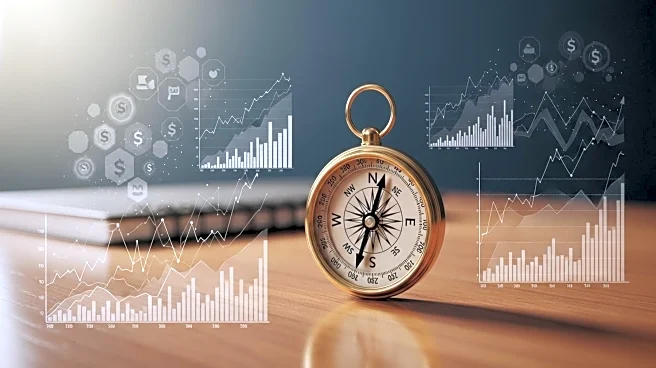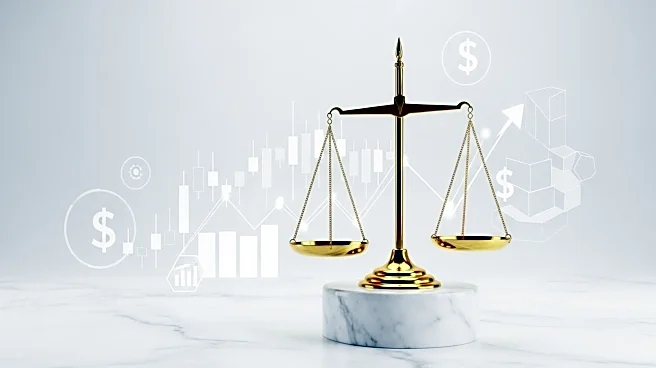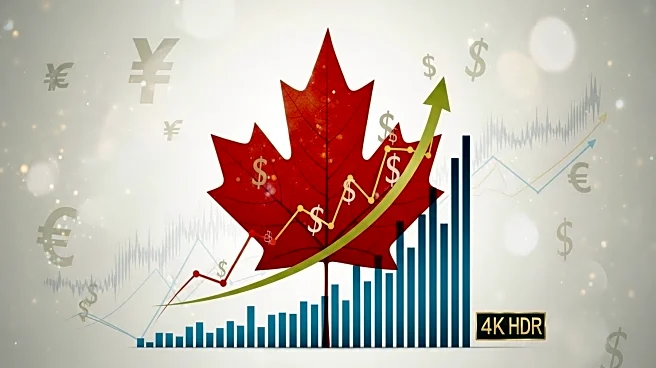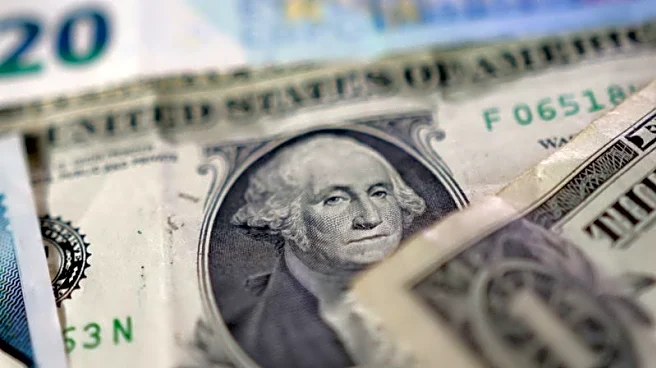What's Happening?
Gold prices have reached unprecedented levels, with a nearly 12% increase in September alone, marking a 47.04% rise year-to-date. This surge is attributed to a loss of confidence in fiscal and monetary policies, as evidenced by rising long-term bond yields. The bond market's reaction to recent rate cuts, which saw an increase in 10-year and 30-year U.S. Treasury yields, reflects fears of currency debasement. Central banks continue to purchase gold, reinforcing its status as a reliable reserve asset amidst concerns over debt and currency stability. The situation is exacerbated by demographic shifts, such as aging populations and declining birth rates, which are reducing demand for long bonds.
Why It's Important?
The rise in gold prices highlights a significant shift in investor sentiment towards tangible assets as a hedge against inflation and currency devaluation. This trend could have profound implications for the U.S. economy, as it suggests a lack of confidence in traditional monetary policies and fiscal management. The increasing demand for gold may also indicate a broader skepticism about the sustainability of current economic strategies, potentially leading to higher inflation expectations and a weaker U.S. dollar. This environment could benefit gold investors while posing challenges for policymakers trying to stabilize the economy.
What's Next?
If the current trends continue, the U.S. Federal Reserve may face increased pressure to address inflation concerns and restore confidence in its monetary policies. The ongoing rise in gold prices could prompt further central bank interventions or adjustments in fiscal policy to mitigate the risk of currency debasement. Additionally, the market's reaction to future rate cuts and economic indicators will be closely monitored to assess the long-term impact on the U.S. economy and global financial markets.
Beyond the Headlines
The current economic climate underscores the potential for a shift towards financial repression, where policy rates are set below neutral levels to manage debt burdens. This approach could lead to a prolonged period of low real yields and increased demand for non-fiat stores of value like gold. The implications for global financial stability and the role of central banks in managing economic growth and inflation will be critical areas of focus moving forward.











